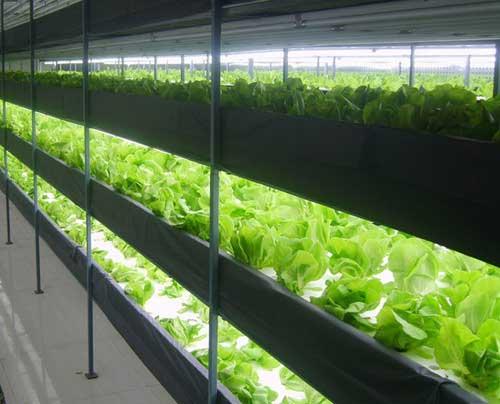Visit Beijing "plant factory"
2009-11-20 14:51 BJT
Despite the second snow of this winter which fell in Beijing on November 10, glossy and green butterhead lettuce and pakchoi were growing well in a laboratory-size "plant factory" at the Chinese Academy of Agricultural Sciences (CAAS), unaffected by the coldness outside.
 |
| "Plant factory" at the headquarters of CAAS |
Reporters specially visited the laboratory-size "plant factory" at the CAAS at 4:30am on that day when the outside temperature was two degrees Celsius below zero. There are four shelves in a room covering an area of 20 square meters. Each shelf has three layers filled with vegetables such as lettuce or pakchoi. A monitor on the wall reported indoor environmental data: the temperature was 25.5 degrees Celsius, relative humidity 52.1 percent and carbon dioxide concentration 1,290 ppm. There are three to four black pipes side by side at a front corner of the room, with their ends directly linking with shelves. A gurgling sound could frequently be heard from them.
"The sound is the automatic circulation of nutrient fluid," Dr. Cheng Ruifeng from the Institute of Agricultural Environment and Sustainable Development under the CAAS explained. He lifted a form plate used for fixing plants as he spoke. Reporters learned that the roots of the plants do not live in soil, but rather are completely soaked in nutrient fluid.
Cheng said that not only can nutrient fluid provide the plants with water, but it can also offer various types of elements that are necessary for plant growth. The growth cycle of hydroponic plants is much shorter than that of plants growing in soil. At present, vegetables such as lettuce and pakchoi growing in the "plant factory" can be harvested 20 days after they are planted, less than half the growth cycle of plants growing in ordinary farmland.

 Mail
Mail Share
Share Print
Print


 Video
Video









 2009 China Central Television. All Rights Reserved
2009 China Central Television. All Rights Reserved